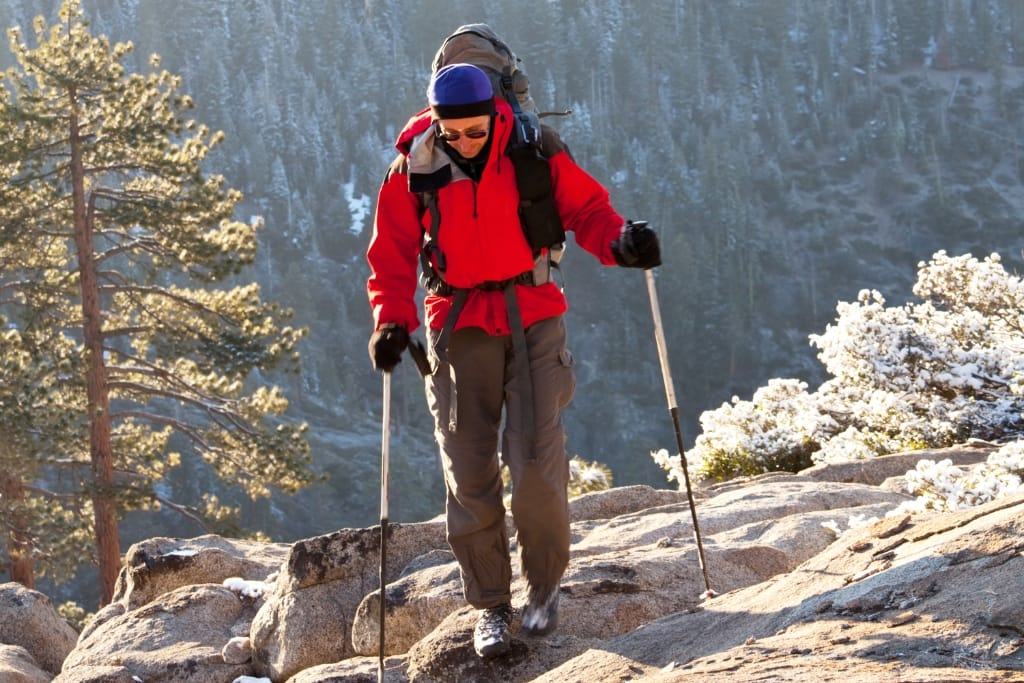Exploring the great outdoors alone can be one of the most rewarding and empowering experiences, offering a chance to connect with nature on a deeply personal level.
However, solo hiking also has unique challenges requiring careful preparation and awareness.
Staying safe should always be a top priority, and knowing how to anticipate and handle potential risks will ensure that your adventure is memorable and secure.
Here are eight essential safety tips to help you confidently and responsibly tackle the trails.
1)) Plan Your Route
Carefully planning your route is the foundation of a safe and enjoyable solo hike.
Start by researching the trail you intend to take, including its difficulty level, terrain, and weather conditions.
Familiarize yourself with trail maps, landmarks, and potential hazards.
Share your plan with someone you trust, including details about your expected return time.
Always ensure your chosen trail matches your fitness level and hiking experience.
Thoughtful preparation allows you to stay on course and enjoy your hike with greater confidence.
2)) Check Weather Forecasts
Checking the weather forecast is a critical step in preparing for a successful solo hike.
Understanding the conditions you’re likely to encounter can help you dress appropriately, pack essential gear, and anticipate potential challenges.
Be alert for extreme weather events, such as heavy rain, strong winds, or sudden temperature drops, as these can significantly impact safety on the trail.
Remember that weather in the mountains can change rapidly, so it’s wise to prepare for unexpected shifts.
With up-to-date weather information, you can confidently head out knowing you’re well-prepared for whatever nature throws your way.
3)) Pack Essential Gear
Packing essential gear is vital to ensuring both safety and comfort during a solo hike.
Start with the basics, such as a sturdy backpack, appropriate clothing layers, and reliable footwear suited to the terrain.
Always carry enough water and high-energy snacks to stay hydrated and fueled throughout your trek.
Include critical items like a first aid kit, a map, a compass or GPS device, and a fully charged phone or emergency beacon.
Don’t forget a flashlight or headlamp, even if you don’t plan to hike after dark, as well as protection like sunscreen and insect repellent.
By equipping yourself with the necessary tools, you’ll be prepared to handle unexpected situations and make the most of your hiking adventure.
4)) Inform Someone Of Plans
Informing someone of your hiking plans is a simple yet crucial safety measure for solo adventurers.
Share important details such as your intended route, estimated start and finish times, and any alternative paths you might take along the way.
This information ensures that someone is aware of your whereabouts and can raise the alarm if you don’t return as expected.
Providing updates if your plans change mid-hike is also a good practice.
By keeping a trusted person informed, you add an extra layer of security to your adventure and give both yourself and your loved ones peace of mind.
5)) Stay On Marked Trails
Staying on marked trails is one of the simplest ways to ensure your safety while hiking solo.
Official trails are designed and maintained to provide the safest and most navigable routes through the wilderness, helping you avoid unexpected dangers like unstable terrain, steep drop-offs, or hazardous wildlife areas.
Venturing off-trail increases the risk of getting lost or injured, and it can also harm the environment by damaging fragile ecosystems.
By sticking to designated paths, you not only protect yourself but also help preserve the natural beauty of the area for others to enjoy.
6)) Carry Enough Food And Water
Carrying sufficient food and water is essential for maintaining energy and hydration during a solo hike.
Be sure to bring high-calorie, non-perishable snacks like energy bars, nuts, or dried fruit to replenish your strength throughout the trek.
Hydration is equally critical, so pack enough water for the duration of your hike, and consider taking a portable water filter or purification tablets in case you need to refill from natural sources.
Dehydration and hunger can lead to fatigue and poor decision-making, so staying properly nourished and hydrated ensures you can focus on the trail ahead and enjoy your hike safely.
7)) Be Aware Of Wildlife
Being aware of wildlife is a fundamental aspect of hiking safely in natural environments.
Understanding the types of animals that inhabit the area can help you prepare for potential encounters and avoid dangerous situations.
Learn and follow guidelines, such as securing food to prevent attracting wildlife, making noise to alert animals of your presence, and knowing how to react if you come across larger animals like bears or mountain lions.
Respecting wildlife by keeping your distance and observing from afar is not only safer for you but also promotes the well-being of the animals and their habitats.
With proper awareness and precautions, you can confidently share the trail with nature’s creatures while preserving the balance of their ecosystem.
8)) Use Navigation Tools
Using navigation tools is essential for staying on course and ensuring your safety during a solo hike.
Traditional tools like maps and compasses remain reliable options, providing guidance even in areas with no cell service or GPS signal.
Modern devices such as handheld GPS units or navigation apps on your smartphone can offer real-time tracking and additional features like elevation data and terrain insights.
However, it’s important to familiarize yourself with how these tools work before your hike and to always carry a backup in case of technology failure.
By utilizing navigation tools effectively, you can confidently explore the trail while minimizing the risk of losing your way.
Conclusion
Solo hiking can be an incredibly rewarding experience, offering a chance to connect with nature and challenge yourself in profound ways.
By following these essential tips—preparing thoroughly, communicating your plans, respecting wildlife, and utilizing proper tools—you can ensure a safe and enjoyable adventure.
Each step you take toward preparedness not only enhances your personal safety but also deepens your appreciation for the outdoors.
With thoughtful planning and a mindful approach, your solo hike can become an unforgettable journey filled with both inspiration and discovery.
Download Our Free E-book!







